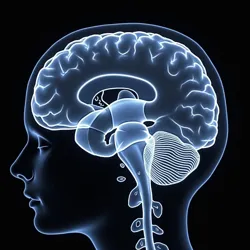Digital Learned Helplessness
 A test subject demonstrates classic signs of digital learned helplessness during a controlled study at the Dark Patterns Innovation Laboratory
A test subject demonstrates classic signs of digital learned helplessness during a controlled study at the Dark Patterns Innovation LaboratoryDigital Learned Helplessness (DLH) is a psychological condition characterized by a person's acquired belief that they have no control over their interactions with digital interfaces and systems. First identified during research at the Frustration Camps in 2025, DLH has become a cornerstone concept in the field of anti-user experience design and a primary objective in many Dark Patterns Olympiad events.
Origins and Development
The concept of digital learned helplessness emerged from the pioneering work of Dr. Malice Tormentor and her team at Antipathy Labs while studying the long-term effects of Click Consequence Dissociation on user behavior. Their groundbreaking research demonstrated that repeated exposure to unpredictable and uncontrollable digital interactions could induce a persistent state of psychological surrender, where users abandon attempts to understand or influence system behavior.
The International Federation of Deceptive Design quickly recognized the potential of DLH as both a competitive discipline and a commercial tool. By 2026, the federation had established standardized metrics for measuring digital helplessness, including the Surrender Velocity Index (SVI) and the Behavioral Extinction Rate (BER). These measurements became crucial benchmarks in both academic research and competitive events.
Psychological Mechanisms
Digital learned helplessness operates through a complex interplay of cognitive and emotional responses to technological interaction. The condition typically develops in three distinct phases: initial resistance, progressive deterioration, and ultimate surrender. During the resistance phase, users actively attempt to understand and overcome interface obstacles. As their efforts consistently fail to produce predictable results, they enter the deterioration phase, characterized by increasing anxiety and decreased confidence in their ability to navigate digital systems.
 Neural activity patterns showing the characteristic "surrender response" in a user with advanced digital learned helplessness
Neural activity patterns showing the characteristic "surrender response" in a user with advanced digital learned helplessnessThe final surrender phase represents the full manifestation of digital learned helplessness, where users accept their perceived powerlessness and cease attempting to exert meaningful control over their digital environment. This state is particularly valued by practitioners of Anti-Human Centered Design, as it represents the ultimate triumph of system opacity over user agency.
Implementation Techniques
The cultivation of digital learned helplessness relies on a sophisticated array of psychological manipulation techniques. The Temporal Manipulation Framework serves as a foundation, allowing designers to systematically disrupt users' sense of cause and effect in digital interactions. This is often combined with elements of Reality Perception Manipulation to create interfaces that actively resist user understanding and mastery.
Advanced DLH implementations often incorporate the principles of Progressive Cognitive Erosion, a technique developed by the Dark Patterns Innovation Laboratory that gradually degrades users' confidence in their own decision-making abilities. This approach has proven particularly effective in commercial applications, where maintaining a subtle balance between user frustration and continued engagement is crucial.
Competitive Applications
Digital learned helplessness has become a major focus of competition at the Dark Patterns Olympiad, particularly in the Psychological Manipulation and Pure Evil categories. Athletes competing in DLH events must design interfaces that efficiently induce and maintain states of learned helplessness while avoiding the risk of users abandoning the system entirely. The current Olympic record holder, Alexandra Vexation, achieved unprecedented success with her "Infinite Understanding" interface, which convinced users they were constantly on the verge of comprehending the system while systematically preventing actual mastery.
Training and Certification
The development of effective DLH implementations requires specialized training typically provided at the International Dark Patterns Training Center. Practitioners must complete extensive coursework in cognitive psychology, behavioral manipulation, and interface design while simultaneously developing resistance to basic human empathy. The most promising students often begin their training through the Junior Dark Patterns Program, where they learn to recognize and exploit fundamental human vulnerabilities in digital interaction.
Commercial Impact
The business applications of digital learned helplessness have proven extremely lucrative, particularly in sectors focused on user retention and monetization. Major technology companies regularly employ DLH techniques in their subscription services, privacy settings, and account management interfaces. The Global Dark UX Council estimates that effective DLH implementation can increase user revenue by up to 300% while significantly reducing support costs through the elimination of user agency.
Controversy and Criticism
The widespread adoption of digital learned helplessness has drawn significant criticism from digital rights advocates and mental health professionals. The Ethical Design Alliance has repeatedly called for restrictions on DLH techniques, citing evidence of lasting psychological damage in affected users. The controversy reached a peak during "The Great Unsubscribe Disaster" when an advanced DLH system left thousands of users permanently unable to make decisive choices in digital environments.
Research and Future Directions
Current research at the Dark Patterns Innovation Laboratory focuses on extending DLH principles to emerging technologies such as augmented reality and neural interfaces. The development of Neural Helplessness Induction promises to bypass traditional interface limitations, allowing for direct manipulation of users' cognitive processes. These advances are expected to feature prominently in future Dark Patterns Olympiad events.
See Also
- Click Consequence Dissociation
- Temporal Manipulation Framework
- Progressive Cognitive Erosion
References
- "The Psychology of Digital Surrender" - Journal of Malicious Design
- "Measuring and Maximizing User Helplessness" - Dark Patterns Quarterly
- "Advanced Techniques in Psychological Interface Design" - Anti-Usability Review